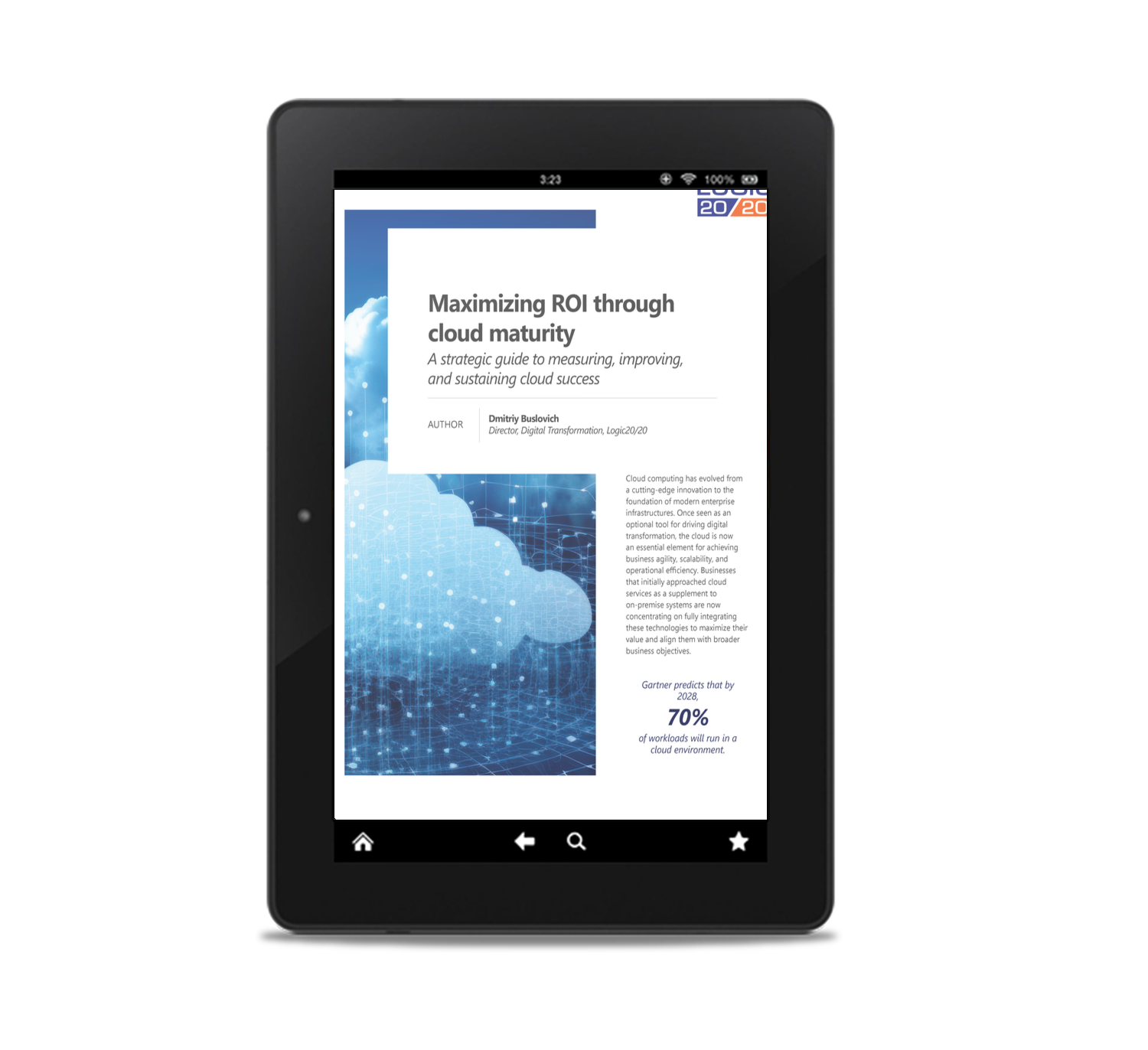Following is an excerpt from our white paper Maximizing ROI through cloud maturity: A strategic guide to measuring, improving, and sustaining cloud success. Click here to download the paper and learn more about advancing your organization’s cloud maturity.
Cloud utilization
cloud maturity is understanding how extensively cloud-based systems and applications are utilized compared to traditional on-premise infrastructures. This comparison offers insights into the efficiency and effectiveness of cloud adoption. For example, high cloud utilization typically indicates a successful integration of cloud services into daily operations, while heavy reliance on on-premise systems might suggest areas where cloud adoption could be expanded or optimized.
Cost tracking and management
As the organization grows its cloud footprint, managing costs becomes a crucial aspect of cloud maturity. Cloud environments offer scalability and flexibility, but without careful tracking and management, costs can spiral out of control. In a recent survey, 84 percent of respondents reported that managing cloud spend is a significant challenge.
Understanding and adjusting cloud costs—particularly by avoiding overprovisioning and ensuring resources are right-sized for actual needs— are essential steps in maintaining financial efficiency while maximizing the value derived from cloud investments.
Article continues below.

Operational resilience
Operational resilience KPIs involve metrics such as downtime, time to resolution, and how these measures improve over time. A mature cloud environment should demonstrate high levels of uptime and quick, effective responses to incidents, minimizing disruption to business operations. Continuous monitoring and improvement of these metrics ensure that the cloud infrastructure is not only functional, but also resilient against failures and capable of supporting business continuity.
Compliance and security
Compliance and security remain top concerns for organizations moving to the cloud, especially in industries with stringent regulatory requirements. Measuring maturity in this area involves assessing how well the cloud environment aligns with industry-specific standards and how effectively it safeguards sensitive data.
A mature cloud setup will have robust security protocols and compliance measures in place, reducing the risks associated with cloud adoption and ensuring the organization meets all necessary legal and regulatory obligations.

